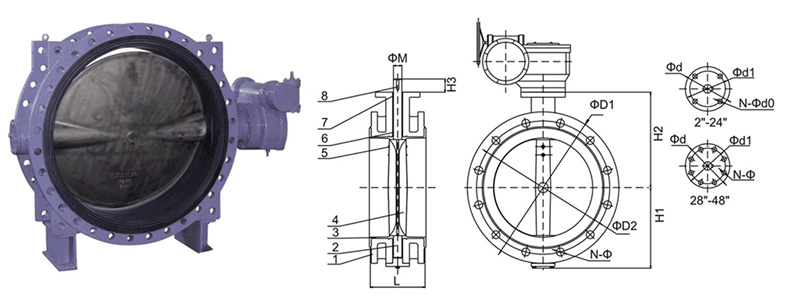9 月 . 10, 2024 14:38 Back to list
Single Plate Check Valve - Reliable Backflow Prevention Solutions
Understanding Single Plate Check Valves Function and Applications
Single plate check valves are essential components in piping systems, designed to allow fluid to flow in one direction while preventing backflow. This functionality is crucial in various industrial applications, ensuring operational efficiency, safety, and protection against potential damage caused by reverse flow.
A single plate check valve consists of a disc or plate that pivots on a hinge or pin. When fluid flows in the desired direction, the plate opens, allowing unrestricted flow. Conversely, if the fluid attempts to flow backward, the pressure drives the plate to close tightly against the valve seat, thereby preventing backflow. This design is notable for its simplicity and effectiveness in controlling flow direction.
One of the primary advantages of single plate check valves is their compact design. Compared to traditional swing check valves or dual plate check valves, a single plate check valve occupies less space and is lighter, making it ideal for installations where space is constrained. Furthermore, they often require minimal maintenance, as their straightforward mechanism is less susceptible to wear and tear.
single plate check valve

The applications of single plate check valves are extensive. They are commonly used in water supply systems, wastewater treatment facilities, chemical processing plants, and HVAC systems. In water distribution networks, these valves help maintain system integrity by preventing backflow, which can contaminate potable water supplies. In wastewater applications, they protect pumps and other equipment from damage caused by surges and backflow.
One significant trend in the use of single plate check valves is the increasing demand for energy-efficient solutions. Engineers and designers are continually seeking ways to enhance the efficiency of systems, and the low-pressure drop associated with single plate check valves contributes to this goal. By minimizing hydraulic resistance, these valves help reduce energy consumption and operational costs in pumping systems.
Moreover, single plate check valves are available in various materials, such as stainless steel, brass, and plastic, allowing for compatibility with different fluid types, including corrosive substances. This versatility extends their application across multiple industries, including food and beverage, pharmaceuticals, and oil and gas.
In conclusion, single plate check valves play a vital role in modern fluid control systems. Their compact design, low maintenance needs, and effective backflow prevention make them an optimal choice for a wide range of applications. As industries continue to evolve and demand more efficient solutions, the significance of these valves will likely increase, bolstering their presence in various engineering and industrial settings. Understanding their functionality and advantages is crucial for engineers and project managers aiming to optimize fluid systems effectively.
Share
-
Understanding the Differences Between Wafer Type Butterfly Valve and Lugged Butterfly ValveNewsOct.25,2024
-
The Efficiency of Wafer Type Butterfly Valve and Lugged Butterfly ValveNewsOct.25,2024
-
The Ultimate Guide to Industrial Swing Check Valve: Performance, Installation, and MaintenanceNewsOct.25,2024
-
Superior Performance with Industrial Swing Check Valve: The Essential Valve for Any SystemNewsOct.25,2024
-
Industrial Swing Check Valve: The Ideal Solution for Flow ControlNewsOct.25,2024
-
You Need to Know About Industrial Swing Check Valve: Functionality, Scope, and PerformanceNewsOct.25,2024